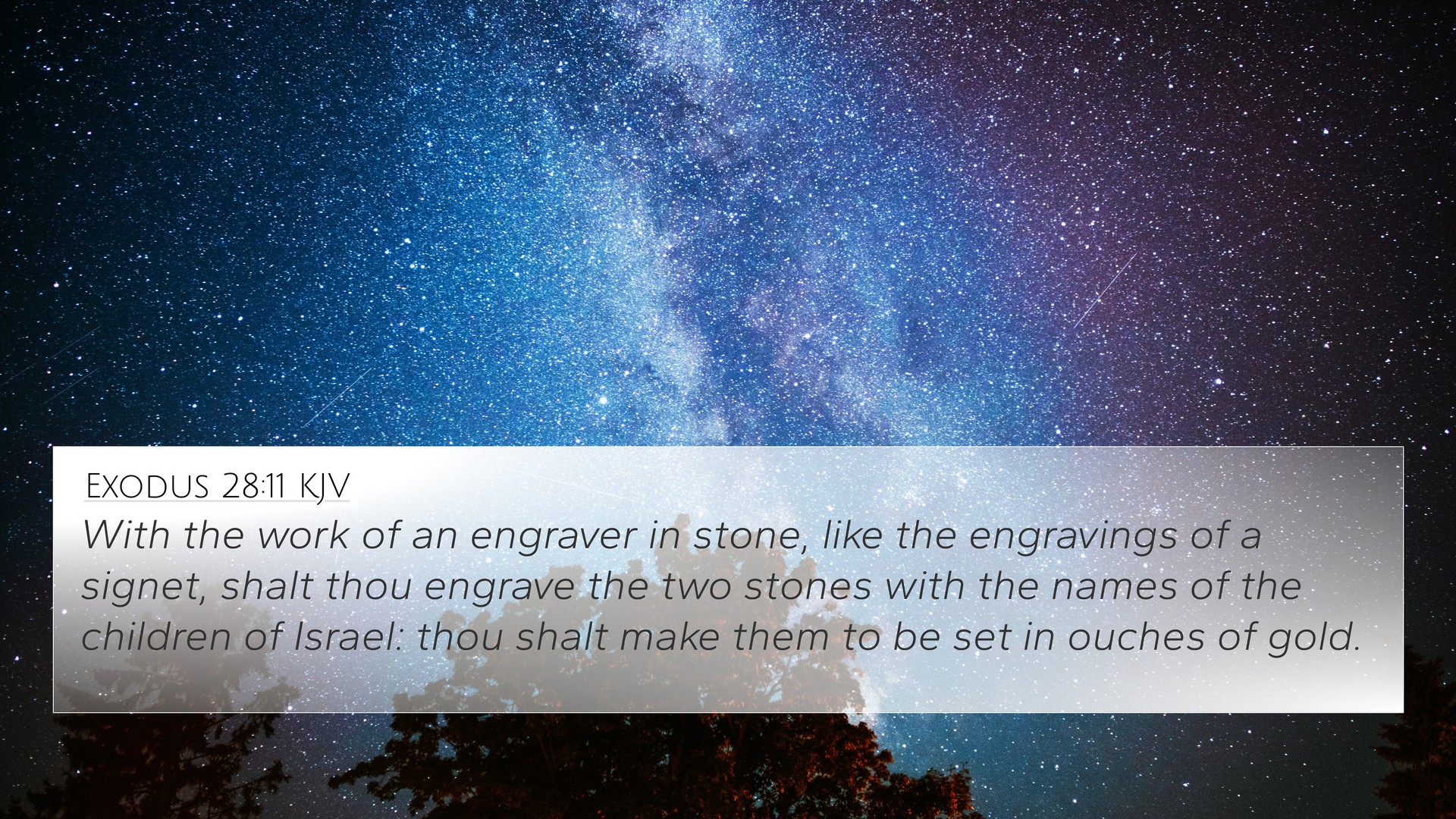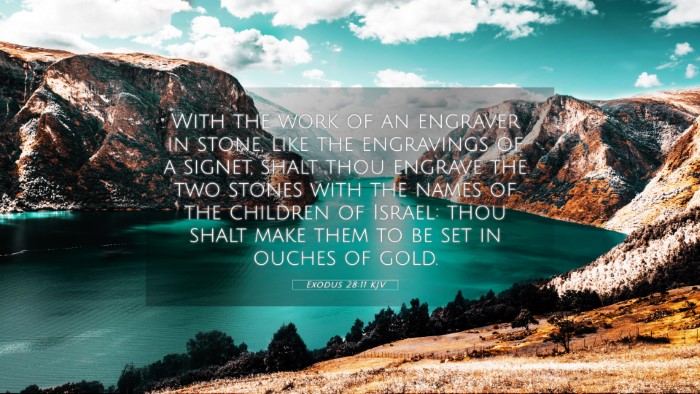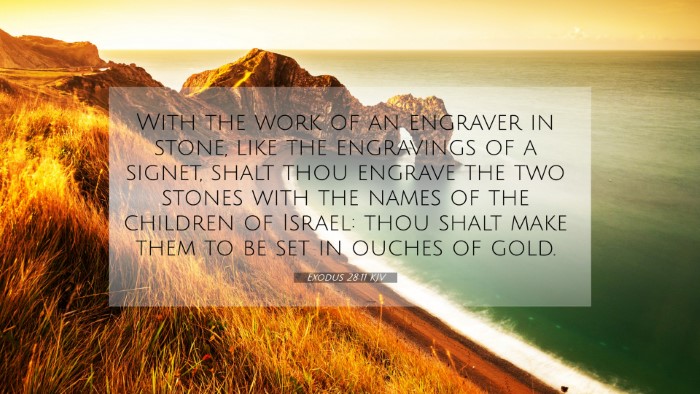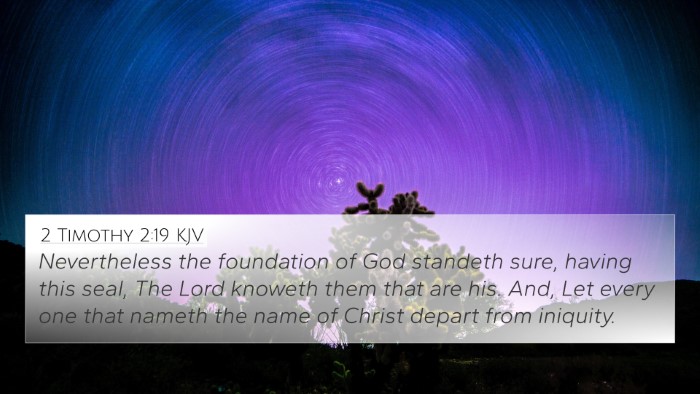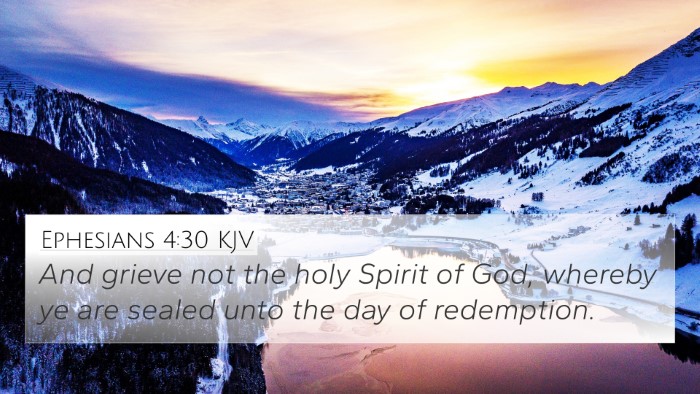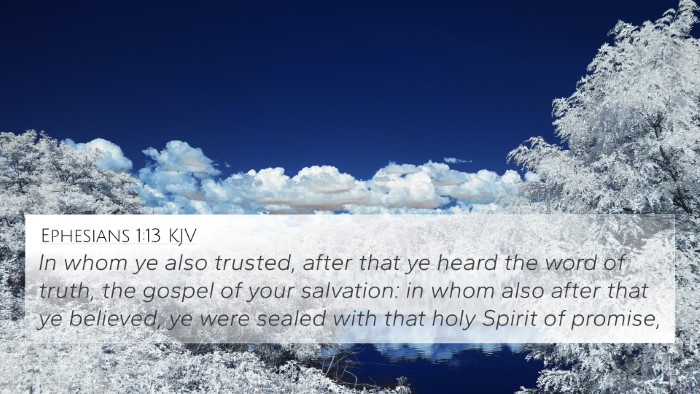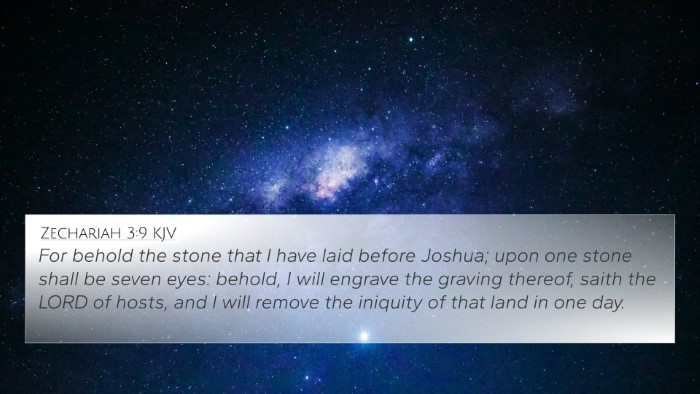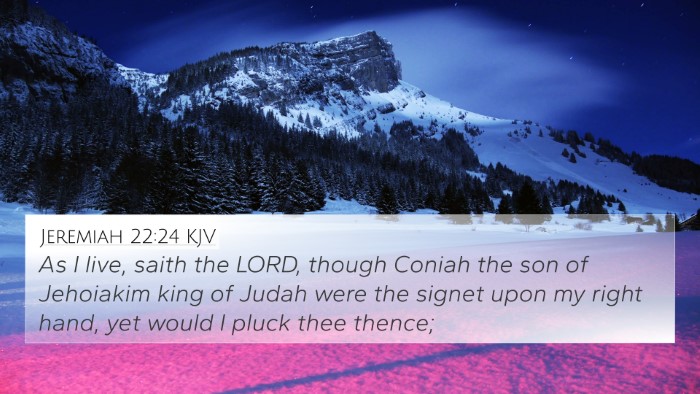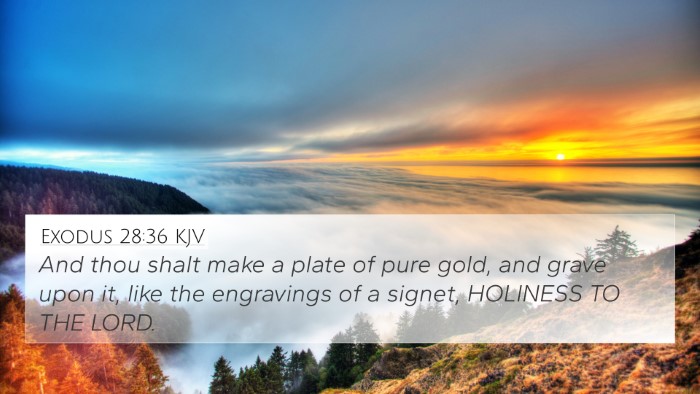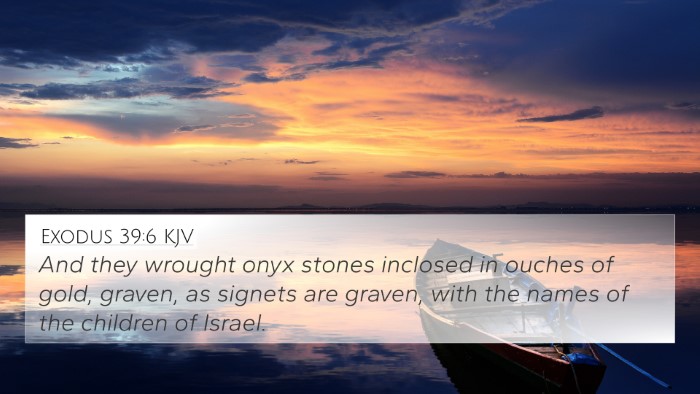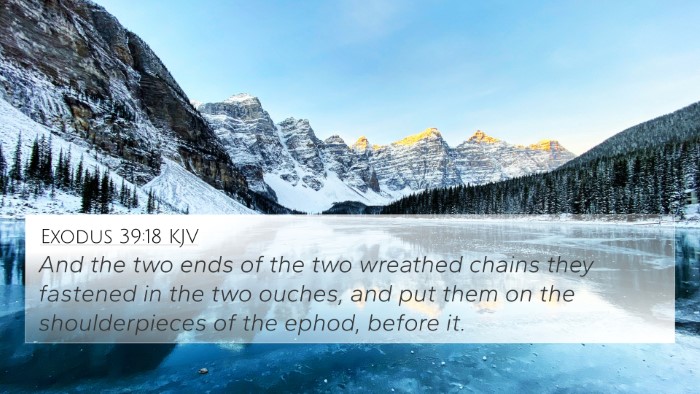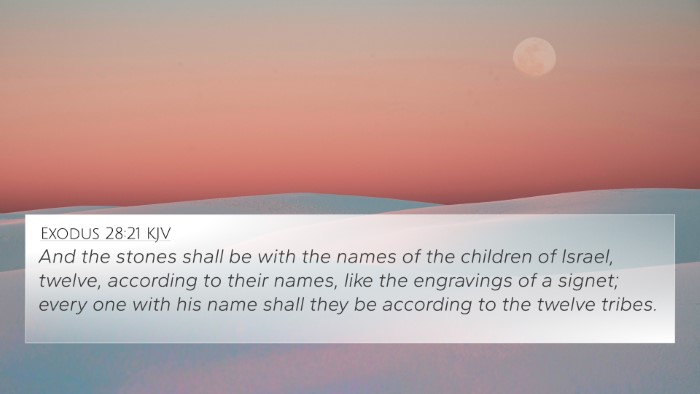Understanding Exodus 28:11
Exodus 28:11 states: "With the work of an engraver in stone, like the engravings of a signet, you shall engrave the two stones with the names of the sons of Israel. You shall set them in settings of gold." This verse is part of God's command regarding the priestly garments and highlights the importance of the high priest’s role.
Significance of the Verse
The verse signifies the explicit instructions given by God to Moses regarding the high priest's attire. The engraved stones bear the names of the sons of Israel, serving as a symbol of representation and advocacy before God. According to Matthew Henry, this engraving signifies the high priest's mediation between God and His people, as he carried their names on his heart.
The Role of the High Priest
Adam Clarke emphasizes that these engravings underline the high priest's bearing of the people's needs and concerns, highlighting the intimate connection between the priest and the nation. The stones represent the twelve tribes, reaffirming their presence before God and their unique identity.
Biblical Context and Connection
This verse is deeply rooted in the overall narrative of Exodus, in which God establishes a covenant relationship with His people. The high priest's garments are not just practical; they hold profound spiritual significance. Albert Barnes draws parallels to the symbolism present throughout Scripture, where names are significant markers of identity and purpose.
Cross-References and Thematic Connections
- Exodus 28:9-10 - Discusses the stones that are to be set in the high priest's breastplate.
- Leviticus 8:8 - Further commands regarding the high priest's vestments and their significance.
- Numbers 1:44-46 - Lists the names of the sons of Israel, directly linking to the names found on the stones.
- Hebrews 5:1 - Discusses the high priest's role in relation to the people, showing continuity in the priestly function.
- Isaiah 49:16 - God's promise that He has engraved His people on the palms of His hands, connecting to the idea of representation.
- Revelation 21:14 - Mentions the names of the twelve tribes of Israel on the foundations of the New Jerusalem, indicating their eternal significance.
- 1 Peter 2:9 - Describes believers as a chosen generation, linking the priesthood's role with that of New Testament believers.
Theological Implications
The engraving on the stones symbolizes the commitment of God’s people to Him and His everlasting covenant. Each name engraved serves as a reminder of individual and communal identity among the tribes of Israel. This engravement not only serves a practical purpose but is also a profound typological representation of Christ as our high priest, as noted in Matthew Henry’s commentary.
Practical Application for Today
For contemporary believers, understanding the symbolism in Exodus 28:11 helps to grasp the significance of representation before God. It invites believers to reflect on their identity in Christ and their role in the body of believers. The high priest's garments remind us of the spiritual armor described in Ephesians 6:10-18, urging us to stand firm in our faith.
Tools for Further Study
To deepen your understanding of the connections within Scripture, consider using Bible concordances and Bible cross-reference guides. These tools allow you to explore thematic connections between Bible verses and broaden your scriptural knowledge. Utilizing cross-referencing Bible study methods can reveal the intricate links between Old and New Testament writings, enriching your personal study and interpretation.
Conclusion
Exodus 28:11 serves as a powerful reminder of the roles and responsibilities associated with priesthood in the biblical narrative. By understanding this verse's meaning and its connections to other passages, believers can appreciate the depth of God's sacrificial love and the significance of their own identity as representatives of Christ in the world.
